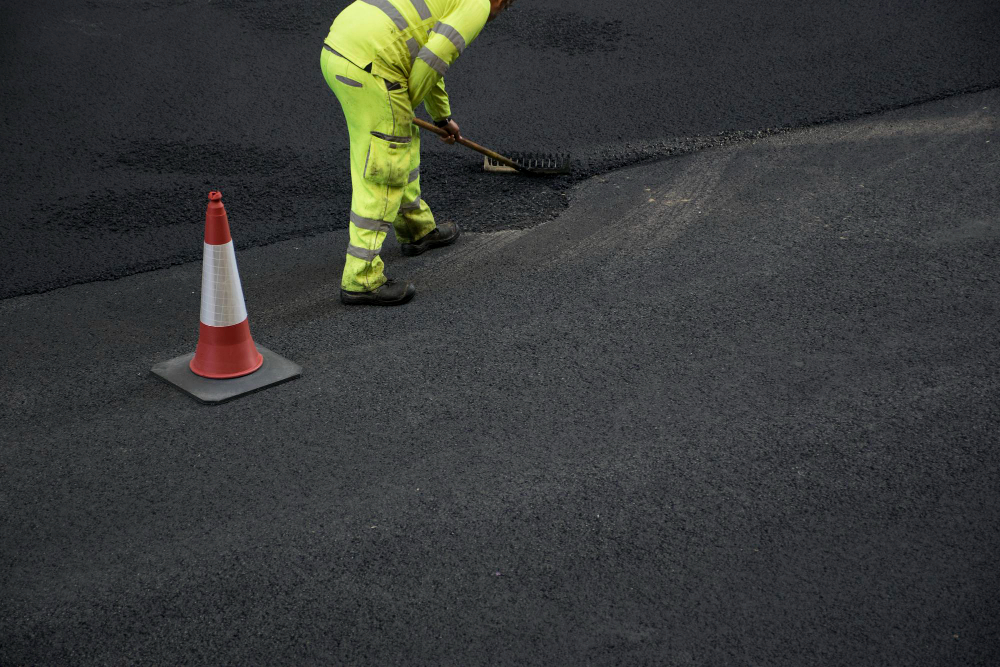
Roadways and parking lots are more than just surfaces we traverse; they are arterial systems of our infrastructure. However, they are constantly under assault from the elements, including sun, wind, water, and mechanical wear. To extend the life of our essential asphalt surfaces, proper maintenance and preservation are crucial. Here, we'll explore the various preservation techniques available to keep those pavements smooth-sailing, quite literally.
What is Sealcoating?
Sealcoating, at its simplest, is the process of applying a protective layer to asphalt-based pavements to provide a shield against environmental stresses and the harmful effects of petroleum-based products such as gasoline and oil. This technique involves a bitumen-based emulsion. The main ingredients of the emulsion are coal-tar pitch, asphalt, and a polymer for improved performance.
Why Sealcoat?
Sealcoating is essential for a multitude of reasons. It acts as a preventative measure, reducing moisture penetration and oxidation, and protects the asphalt from the harsh ultraviolet rays. It seals the pavement against the invasion of rain and snow, thus preventing the seepage of water into the base materials and keeping freeze-thaw cycles at bay.
Sealcoating also imparts a fresh, jet-black color to the pavement, which, believe it or not, is not just for aesthetics but aids in the melting of snow and ice, making it easier to plow and maintaining a professional-looking surface. Finally, sealcoating reduces the need for asphalt repairs due to traffic wear and chemical spills.
Different Types of Sealcoats
There are two primary types of sealcoat materials—coal-tar emulsions and asphalt emulsions. Coal-tar emulsions are known for their durability and resistance to gasoline and oil, making them a preferred choice for high-traffic areas. On the other hand, asphalt emulsions are more ecological and often less expensive, although they have a shorter lifespan.
The Application of Sealcoat
Application is a critical aspect of sealcoating. It requires proper temperature and humidity conditions. Sealcoat is applied either by squeegee, broom, or spray systems. The area should be clean and free of any debris, and the weather must be optimal during and for a certain period after application for it to set and cure correctly.
Addressing the Initial Breach
Once cracks appear in the pavement, they're like an open wound; if left unsealed, they will continue to widen and deepen, allowing water to penetrate further and potentially compromise the substrate. Crack sealing is a method that aims to thwart this progression.
How it Works
Crack sealant is applied into the crack using a pressure pot or wand device. The treatment not only stops moisture from advancing but also helps support the adjacent pavement. It ensures that the cracks do not grow to cause more significant damage, and when done properly, the surface is left unmarred.
Materials for Crack Sealing
Specialized hot-pour crack sealants are most commonly used for this process. These sealants are designed to remain flexible at both high and low temperatures and accommodate the expansion and contraction of cracks.
Protection Through Consistency
Routine maintenance is one of the best ways to preserve asphalt surfaces. It includes activities such as regular sweeping, pavement evaluation, pothole repair, and ensuring proper drainage.
Why Is Routine Maintenance Crucial?
By addressing issues as they arise, you can extend the life of the pavement and prevent more substantial problems. Small cracks can be filled, potholes can be repaired, and poor drainage can be fixed to prevent water from pooling, which can lead to degradation.
On the Cutting Edge of Restoration
Infrared repair is a modern technique for fixing localized pavement distress such as potholes without the need for patching. It involves heating the area with infrared radiation until it's soft enough to be raked out and replaced. The repaired section blends in seamlessly with the surrounding asphalt, providing a smooth, continuous surface.
The Benefits of Infrared Repair
Not only is the repair of a higher quality, but it also extends the life of the affected pavement by offering a more permanent fix. It minimizes the need to cut out and discard large areas of deteriorated pavement, which makes it an eco-friendlier option as well.
Pavement Vitality in a Bottle
Rejuvenators are penetrating oils that soften the asphalt and help restore the pavement's original properties. They bring back the malleability to the surface that it lost by being exposed to the elements.
How Rejuvenators Work
Rejuvenators are applied in the same manner as sealcoats. They can restore the flexibility lost due to aging, which can prevent the development of new cracks and rejuvenate the durability of the asphalt. They can also be used as a pre-treatment before sealcoating for a deeper preservation effect.
Every pavement is unique, with its own set of parameters and requirements. What's clear is that preservation techniques for asphalt are not one-size-fits-all. By understanding the options available, you can make more informed choices that will keep asphalt surfaces in top condition for the longest time possible.
If you need assistance with sealcoating in Sanford, Florida, reaching out to professionals at Florida Sealcoating can be the next step in keeping your pavements safe and protected. By acting now and taking advantage of these preservation techniques, you're not just maintaining a surface; you're ensuring smooth and safe travel for all who use it.